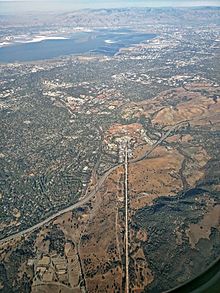The matter around us has a kind of mirror image - antimatter. A particle and its antiparticle have an opposite electrical charge, among other things. The electron's antiparticle positron was the first to be discovered. With high concentrations of energy, a pair of particles and antiparticles can be created, but when a particle and an antiparticle meet, both are annihilated and their mass is converted into radiation.
In a 1955 experiment with a powerful particle accelerator, Owen Chamberlain and Emilio Segrè confirmed the existence of the proton's antiparticle, the anti-proton. Owen Chamberlain and Emilio Segrè were awarded The Nobel Prize in Physics 1959 for their discovery of the anti-proton.
In a 1955 experiment with a powerful particle accelerator, Owen Chamberlain and Emilio Segrè confirmed the existence of the proton's antiparticle, the anti-proton. Owen Chamberlain and Emilio Segrè were awarded The Nobel Prize in Physics 1959 for their discovery of the anti-proton.
Biography
Chamberlain studied physics at Dartmouth College and at the University of California, Berkeley. He remained in school until the start of World War II, and joined the Manhattan Project in 1942, where he worked with Segrè, both at Berkeley and in Los Alamos, New Mexico.
In 1946, after the war, Chamberlain continued with his doctoral studies at the University of Chicago under physicist Enrico Fermi. Fermi acted as an important guide and mentor for Chamberlain, encouraging him to leave behind the more prestigious theoretical physics for experimental physics, for which Chamberlain had a particular aptitude. Chamberlain received his Ph.D. from the University of Chicago in 1949.
 |
| L to R - Owen Chamberlain, Clyde Wiegand, and Emilio Segre |
In 1948, having completed his experimental work, Chamberlain returned to Berkeley as a member of its faculty. There he, Segrè, and other physicists investigated proton-proton scattering. In 1955, a series of proton scattering experiments at Berkeley's Bevatron led to the discovery of the anti-proton, a particle like a proton but negatively charged. Chamberlain's later research work included the time projection chamber (TPC), and work at the Stanford Linear Accelerator Center (SLAC).
 |
| SLAC and its neighborhood, where it stands out as a long straight feature. The main accelerator is 3.2 kilometers long—the longest linear accelerator in the world—and has been operational since 1966. |
Owen Chamberlain was born on 10 July, 1920.
References
- NobelPrize.org
- Wikipedia
Read more at the Science Pole App


No comments:
Post a Comment